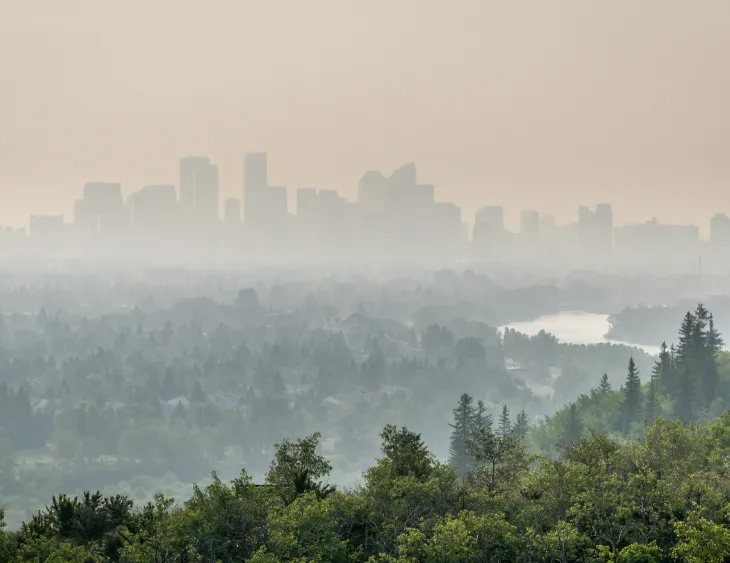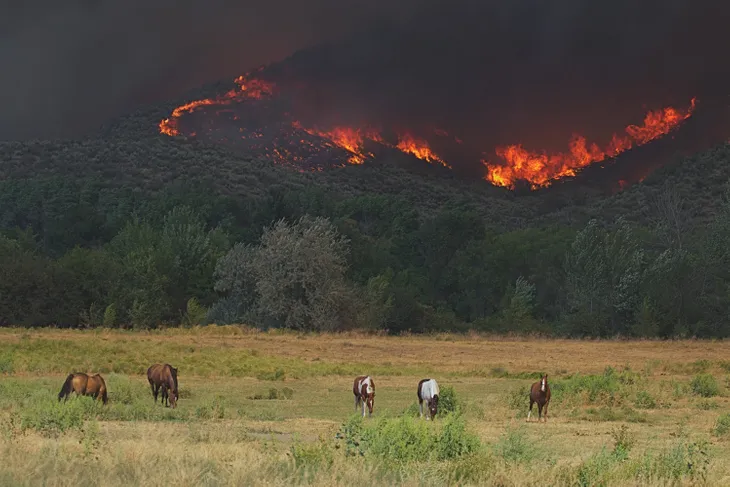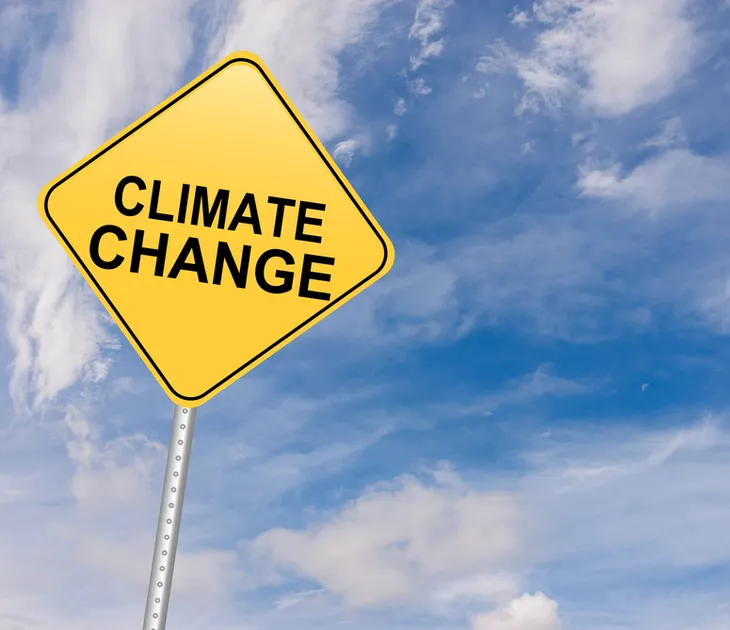With wildfire smoke affecting most of North America, what are the best ways to minimize the health impacts of air pollution under climate change? Here are answers to some key questions about the ongoing air quality problems.
What is happening with air quality right now?
Many North Americans have never experienced local air quality as bad as it’s been this week. The air quality has been poor across the most densely populated regions in Canada and the United States. Based on analysis starting in 2006, the average U.S. population exposure to wildfire smoke is one of the highest estimated, and the highest over the eastern U.S. Air pollution levels, measured by the Air Quality Health Index in Canada, and the Air Quality Index in the U.S., have been considered high risk across much of Canada, and the eastern U.S.
What is causing the poor air quality?
Climate change is contributing to unusually hot, dry weather recently experienced over much of Canada. This creates conditions that foster haze, smog and wildfires.
The number and extent of fires burning, and prevailing winds, means that the vast majority of Canadians across the country have been at least somewhat impacted by wildfire smoke this week. Winds are pushing smoke from western fires eastward across the north and Prairies. They have, during the worst air quality, swept smoke from fires in Québec directly into the most densely populated regions of the continent, contributing to record-breaking pollution in New York.
Those living nearest to the fires are affected by high levels of harmful particles and gases directly emitted by the fires. Those in downwind regions are also affected, as small particles stay suspended in air for days, and hot gases from the fires cool and condense into even more particles, forming haze and smog.
What are the risks to us?
The unhealthy levels of pollution we have now can impact our daily activities or affect travel due to poor visibility and haze. The current estimated cost of air pollution in Canada is $120 billion per year. The worst impacts are to human health. Health Canada estimates that air pollution is linked to more than 15,000 premature deaths in Canada every year.
Wildfire smoke, specifically, can cause throat irritation, coughing, headaches and can affect lung function even in healthy children. It is linked to acute respiratory symptoms for people with asthma and chronic obstructive pulmonary disease (COPD). Visits to doctors, emergency departments, and hospitalizations will increase.
What can we do to protect ourselves in the short term?
People can help protect themselves by paying attention to air quality alerts and follow associated guidance. This guidance typically involves reducing exposure by limiting time outdoors when pollution is severe, especially for vigorous physical activity.
We need more evidence on who is most susceptible groups to wildfire smoke, specifically. However, based on evidence of the effects of air pollution, children, the elderly, pregnant women, and people with asthma and COPD, among others, should follow guidance for sensitive groups, which may mean remaining indoors.
Outdoor air can also get inside, especially in leaky homes with open doors and windows. When inside, keep your doors and windows closed, and run filtration, such as a central HVAC or heat pump system with an air filter, or run an indoor air purifier. Keep indoor air clean by reducing sources of smoke from tobacco, wood fireplaces, cooking and candles. When outside, wearing a well-fitting N95 mask offers protection from smoke particles, but will not filter out harmful gases.
 Photo Credit: Amazon
Photo Credit: AmazonWhat can we do to protect ourselves in the long term?
My own research has shown that fighting climate change per our global agreement will help reduce the rise in air pollution. So will further reductions in other sources of air pollution, along with wildfire management strategies.
Given, however, that wildfires — and days with poor air quality — will continue, we should also protect our most vulnerable with access to clean indoor environments. Outdoor air pollution unfairly affects racialized and socio-economically disadvantaged communities, which also have lower access to shelter that keeps polluted air out.
Is this a ‘new normal?’
Climate change has already played a role in rising wildfire risks over the last century. Those risks are projected to further increase over parts of North America. Canadian research suggests that the conditions causing unmanageable wildfires could more than double some risks in parts of the country this century, including those currently experiencing fires.
Further, climate change is known to increase air pollution, both average, and extremes levels. We can hope this will not be a new normal, but, to prevent that, we need to act to reduce these risks.
What can we learn from this moment?
This moment shows the risks we face if we do not address climate change and air quality together. We have made major gains in air quality in North America over the last fifty years thanks to significant reductions in emissions of air pollutants. However, those reductions are at risk from the worsening effects of climate change.
This moment also shows the clear and tangible impacts of climate change on our health. Research, including a study I co-authored, has shown that policy to fight climate change has big benefits for air quality, and those benefits alone can exceed the entire cost of a climate policy. Climate change is also a local health issue, and the greatest opportunity to equitably improve health of this century.
Rebecca Kaarina Saari, Associate Professor of Civil and Environmental Engineering, University of Waterloo
![]()
This article is republished from The Conversation under a Creative Commons license. Read the original article.









